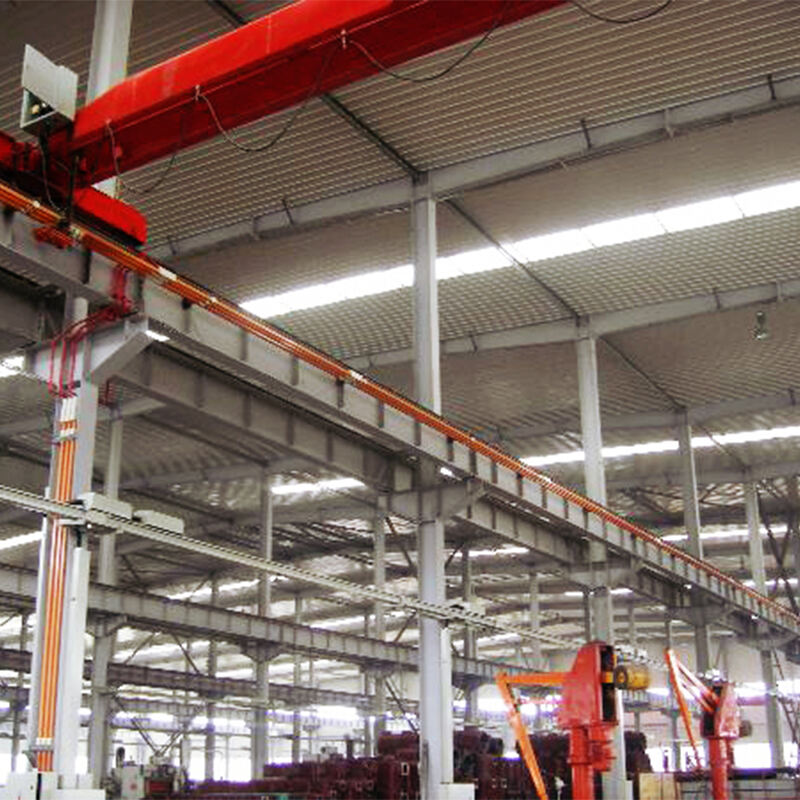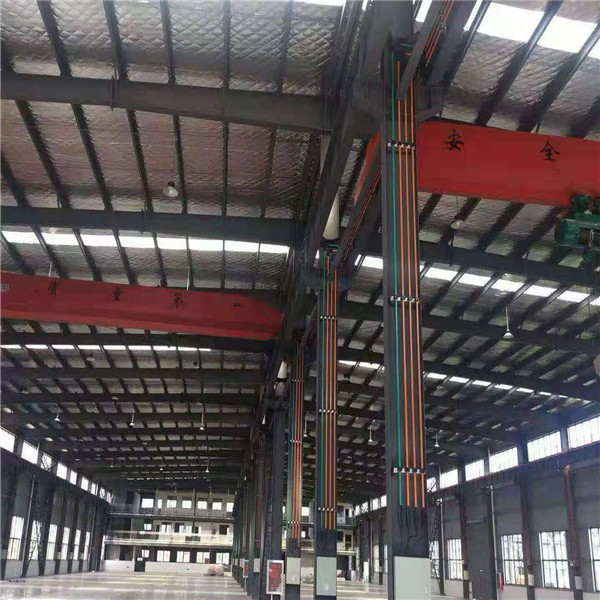Sliding contact lines or sliding electrical contacts are essential elements which find broad industrial applications. The adaptable technologies serve as vital elements for power and signal transmission between stationary components and rotating elements of machinery. Sliding contact lines serve industrial needs across diverse environments thus becoming crucial elements for both industrial factories and warehouse operations. This section details all current practical applications of sliding contact lines by Wuxi Komay alongside their effects within multiple industry segments.

Enhanced Manufacturing Processes
Sliding contact lines are necessary for maintaining efficient manufacturing operations in industrial machinery. These components find applications in rotary joints and swivels whereas they enable electrical current transmission to active system components. Manufacturing processes become more precise and productive because sliding contact lines provide a dependable power and signal transmission flow. These components maintain their reliability because they operate effectively at high rotational speeds thus becoming essential in areas requiring precision and consistency.
The automation of production lines benefits from installed sliding contact lines. The components function in robotic arms and automated guided vehicles (AGVs) by maintaining uninterrupted power and data transmission for performing advanced manufacturing operations. Sliding contact lines installed in automation systems deliver two major advantages by boosting productivity and minimizing operational disruptions and maintenance expenses.
Streamlined Warehouse Operations
Sliding contact lines serve as essential warehouse components which enhance the storage and retrieval operations in material handling facilities. The overhead conveyor systems in warehouses use these components to transport items between distant areas. The reliable power supply function of sliding contact lines maintains conveyor system operation which enables continuous product flow for inventory effectiveness.
The automated storage and retrieval systems (AS/RS) implement sliding contact lines for their operations. The systems need uninterrupted power supply and data transmission to run their lifting systems that store and retrieve items efficiently. The reliable operation of sliding contact lines allows AS/RS systems to run efficiently thus reducing inventory search times and boosting warehouse operational performance.

Improving Heavy Machinery Functionality
Construction equipment together with mining machinery and industrial tools achieve better functionality because of sliding contact lines. Reliable transmission control signals as well as power supply are essential requirements for equipment such as cranes and excavators and drilling rigs to operate effectively. The operational reliability of machines in challenging environments results from their sliding contact systems which prevent disruptions.
Sliding contact lines become a vital part of cranes due to their ability to connect electric power in rotating machinery sections while enabling continuous movement. The platform's functionality allows cranes to complete intricate lifting duties accurately and reliably thus supporting construction activities together with heavy material movement needs.
The technology of sliding contact lines enhances reliability performance in different energy sector devices.
Power generation facilities together with wind turbines heavily implement sliding contact lines to enhance operational reliability and performance throughout their energy production processes. Wind turbines use sliding contact lines in their yaw and pitch control systems to manage the blade direction and angle because this enables better wind energy harvesting. Sliding contact lines demonstrate reliable operations which leads to superior system performance thereby generating more energy and reaching higher efficiency.
Sliding contact lines operate inside rotating electrical generators of power plants when they transfer continuous electricity to grid systems. Their functioning ability under extreme speed and harsh conditions positions these components as fundamental elements for producing stable electricity efficiently.
Advanced Applications in Robotics
Robotics benefits from sliding contact lines to power its rapidly advancing field while serving numerous operational needs in its practice today. Sliding contact lines in articulated robots allow manufacturing and precision assembly operations and medical surgery functions between the base station frame and moving robotic joints. The ability to transmit power and signals gives robots their high degree of precision and agility.
Sliding contact lines operate in mobile robot docking stations to provide charging service while supporting data transfer between automated systems. Such dependable contact lines enable mobile robots to stay operational-ready between maintenance sessions therefore continuing their mission tasks automatically.
Conclusion
Manufacturers use these versatile contact lines because they establish dependable operations in various industrial sectors which include both factories and warehouses. Power transmission and data communication capabilities of sliding contact lines make them vital components for manufacturing operations as well as automated storage systems and heavy machinery and energy production and robots. Sliding contact lines will play an even more prominent role in improving industrial productivity through technological progress in the future. Knowledge about the practical aspects of sliding contact lines enables industries to use this technology for better operational achievements along with new solution development across operational areas.

 EN
EN
 AR
AR
 HR
HR
 CS
CS
 DA
DA
 NL
NL
 FI
FI
 FR
FR
 DE
DE
 EL
EL
 HI
HI
 IT
IT
 JA
JA
 KO
KO
 NO
NO
 PL
PL
 PT
PT
 RO
RO
 RU
RU
 ES
ES
 SV
SV
 TL
TL
 IW
IW
 ID
ID
 LV
LV
 LT
LT
 SR
SR
 SK
SK
 UK
UK
 VI
VI
 SQ
SQ
 HU
HU
 TH
TH
 TR
TR
 AF
AF
 MS
MS
 BN
BN
 MN
MN
 KK
KK
 KY
KY
